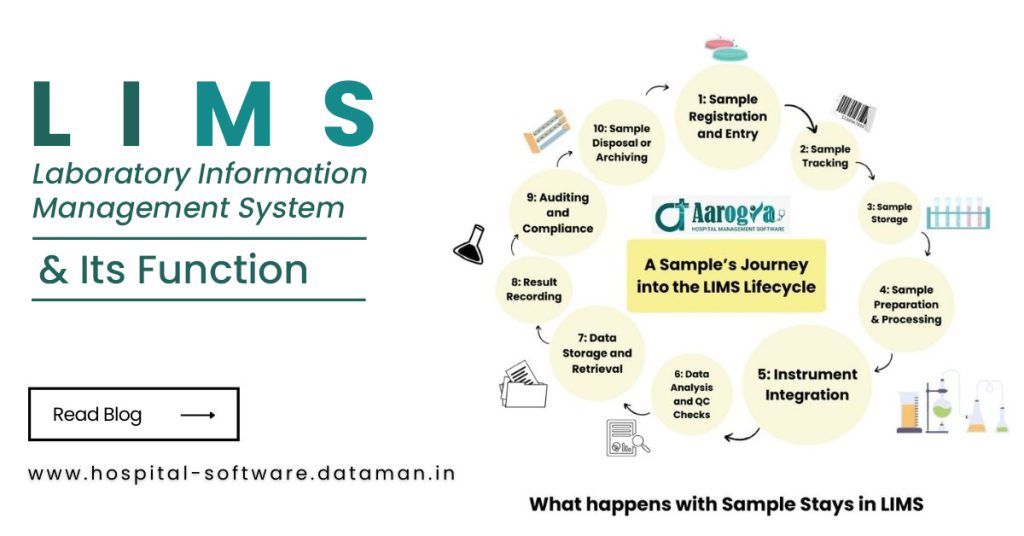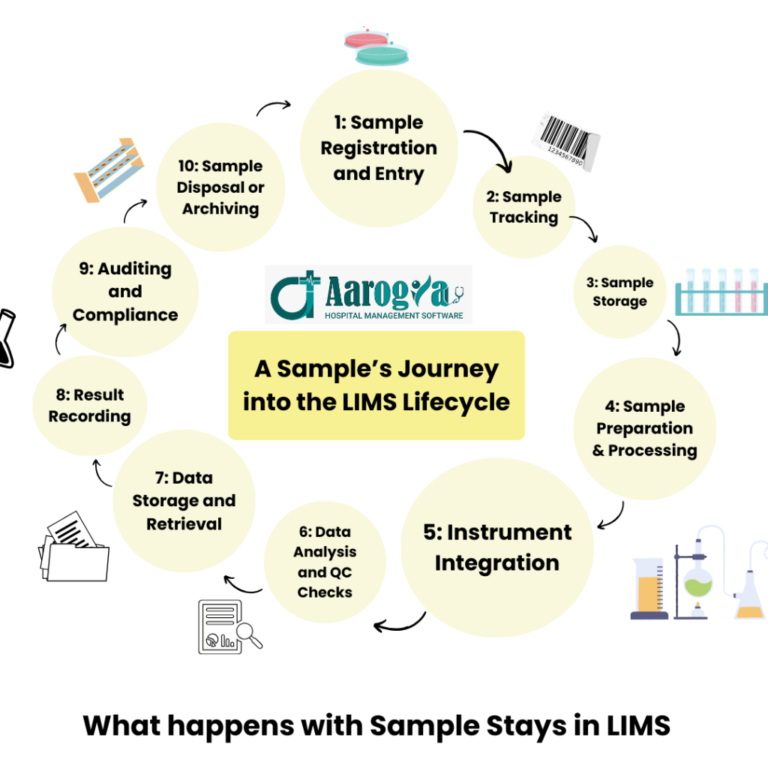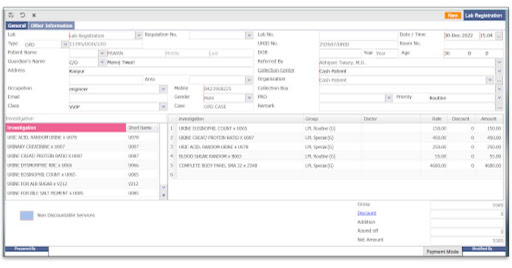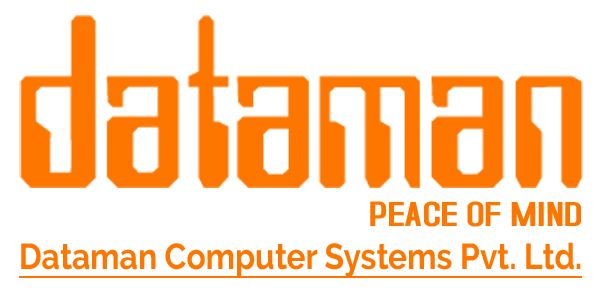- +91 9511117684
- shweta@dataman.in

Table of Contents
Post Views: 16,596
Whenever we encounter any health issue, our foremost thought is to visit a doctor knowing we’ll get a solution to our ailment. But how often do we wonder about the sheer importance of labs in our lives?
We are often advised to go through one or several tests for the doctors to properly understand what’s actually happening in our bodies and then prescribe us medicines and treatment accordingly. Doctors and labs work together and are two of the strongest pillars in the healthcare system of our lives.
And if you’ve ever gone to a pathological lab and given a sample to be tested, you can easily recall that the major concerns within your mind are always:
The thing is Lab tests are complex matters and a single patient is subject to one or several tests eg. CBC, TSH, Glucose, Creatinine, Vitamin B12, Vitamin D, Haemoglobin, Blood culture, Electrolyte, Blood Group etc. There are many incidents when the wrong diagnosis or results in reports due to human error has led to further improper medications and treatments worsening a patient’s condition. Hence, Lab processes require a great level of accuracy and precision which is very well provided by LIMS.
So, what truly is LIMS, what are its benefits, key features and how do those features aid lab processes throughout a Sample lifecycle and how LIMS has revolutionized the healthcare system.
What is a Laboratory Information Management System (LIMS)?
Laboratory Information Management System(LIMS) is a comprehensive and integrated software-based solution designed to automate workflow and effectively manage sample collections and associated data for reliable, faster and error-free diagnosis reports.
It streamlines, automates and manages data and information involved in the processes of a lab from patient registration, test masters, lab technician responsible, sample collection, lab test values, and patient reports to receipts and much more.
Aarogya Lab Storage
Aarogya Lab Processing
Aarogya Sample Generation
You have gotten a fair idea by now of LIMS and its importance, but there’s more beneath the surface in terms of its benefits(when installed in a lab), a few of which we’re discussing here.
Also read : What is HMIS & Why Every Hospital Should Have An HMIS
Benefits of LIMS in a Lab
1. Enhanced Sample Tracking: Pathological labs deal with a tremendous volume of sample data daily. LIMS provides a comprehensive and integrated sample-tracking system which monitors real-time sample location and status ensuring misplacements don’t happen.
2. Digital Delivery and Real-time Notification Alerts:LIMS enhances customer satisfaction by providing notifications, alerts and online tracking of the status of their tests. Digital and on-time delivery of patient test reports via automated SMS, emails or WhatsApp notifications saves their time as they don’t have to visit labs again for it. And one of the most significant problems it solves is for the people who are struggling with chronic illnesses, who have to go through several doctors and have to maintain a file of reports to brief doctors of their medical history. Online storage of reports helps patients carry their reports anywhere anytime without forgetting anything preventing unnecessary hassle and time wastage.
3.Paperless and Hasslefree Lab Management: LIMS helps store all laboratory information and data including patient details, supplier information, lab reports and receipts for financial management in one place. It helps in error-free data storage and faster retrieval of information while maintaining the accuracy and integrity of the patient’s data. Lab technicians are free to be more productive and efficient because they don’t have to deal with large amounts of paperwork. Thus LIMS reduces paper costs, is environment friendly, and improves the efficiency and productivity of the overall process of a lab.As per Research published in National Library of Medicine, the papers used in printing reports cost increase annual costs by Rs 50,000. Overhead expenses like machine maintenance can take this as high as 2-3 Lakhs.

Lab Report Printing Cost Comparison
4. Real-time Collaboration: LIMS facilitates seamless communication and collaboration among lab staff through in-app notifications and timely alerts. Pathologists, technicians, and other personnel can access and share data in real-time, promoting efficient teamwork and information exchange.
5. Compliance with Regulatory standards: Pathological labs are subject to stringent regulatory requirements. LIMS helps in ensuring automating documentation and maintaining an audit trail. This helps in meeting regulatory standards as per NABL and HIPPA, and simplifies the process of audits and inspections.
6. Efficient Inventory Management:LIMS assists in managing the inventory of reagents and supplies, preventing shortages and minimizing wastage. This contributes to cost savings and ensures that pathological labs can operate smoothly without disruptions.
7. Integration with Laboratory Instruments: Seamless integration with laboratory instruments is a key feature of LIMS in pathological labs. This integration automates the transfer of data from instruments to the LIMS, reducing the risk of transcription errors and enhancing overall efficiency.
Report published in the National Library of Medicine, shows that integrated interfaces for Lab machines can reduce discrepancy of data by 3.7% (260 discrepancies out of 6930 manually entered data). This sure looks like a small number but has a huge blow to the overall experience of patients as these discrepancies resulted in mistranscriptions. Ultimately, these mistranscriptions result in increasing the annual healthcare service costs by 2%.
Also read : Understanding IPD vs OPD | Difference Between IPD and OPD
We’ve learned about some of the benefits but now the question arises how does a LIMS work and manage all that it claims to do? LIMS has certain key features that take care of the entire sample lifecycle from collection until it has undergone processing and make sure that the process goes on smoothly. We’re gonna discuss step-by-step those features and their part in the process.
Navigating the Sample Lifecycle with LIMS

Sample Lifecycle in LIMS
Sample Registration and Entry:
The first step is always sample collection. Samples are collected from various sources, and relevant information (e.g., sample type, date, location, patient details) is recorded. LIMS helps avoid cumbersome use of spreadsheets and other traditional ways of data storage. LIMS helps save time and reduces error by entering data once–and only once–with any of the following methods:
- Integration with an electronic record or laboratory information system (LIS) or through automated interfaces with instruments or other systems.
- Barcode scanning
- Manual entry
Sample Tracking: Once the sample data is stored the next question is how to track where it’s going. LIMS thus assigns a unique identifier (RFID tags, barcodes etc.) linking sample’s associated data to each sample to ensure accurate and traceable tracking throughout the entire process. This way technicians can keep track of the sample’s location, status, and any changes in its journey through the laboratory.
Sample Storage: There are some kinds of tests where samples are required to be stored before processing. LIMS has a key feature of maintaining a comprehensive inventory of all storage locations within the lab including freezers, refrigerators and other storage units. It tracks the availability of storage spaces and assigns specific locations for each sample based on predefined criteria such as sample type or priority ensuring easy retrieval when needed. LIMS also monitors and records the storage conditions like temperature and humidity.This feature ensures sample integrity as it generates alarms if the storage conditions deviate from the specified range.
Sample Preparation & Processing: As different samples have varying nature, types and tests to be conducted, the LIMS helps guide lab technicians through the sample preparation process which may involve aliquoting, centrifugations and other preparation steps. Another key feature of LIMS is that it provides predefined protocols or standard operating procedures (SOPs) and Quality Control (QC) measures ensuring consistency, accuracy and proper workflow at each step in sample processing.

Lab Registration Entry Using Aarogya
Instrument Integration: Well, well!! This is our favorite feature of LIMS. LIMS can seamlessly integrate with and feed control files into laboratory instruments, machines and equipment directing their operation on a sample. Real time data and instruments analytical results flow effortlessly from machines & instruments to LIMS warding off manual data entry errors. LIMS captures and links these results directly to the corresponding samples, speeding up the overall process as results immediately avail themselves in the electronic system. Another amazing feature is that since LIMS monitors and keeps records of instrument health, scheduling their maintenance, calibration or repair, it won’t permit a specific task until making sure the instrument is within control and the executing personnel has a renewed certificate.
Data Analysis and Quality Control Checks: As already discussed above, LIMS has built-in Quality Control(QC) Checks that verifies if the sample meets the criteria at each stage of processing. If LIMS finds out that there’s even a slight deviation, outlier or anomaly from expected values it triggers alerts, signaling the need of deeper investigation or manual intervention. It ensures accuracy and most importantly saves time as the issue can be solved at the particular step curbing further advancement of wrong analysis till the result, which will require another run through.
Data Storage and Retrieval:
At each processing stage,laboratory technicians enter relevant data into the LIMS. Annotations,comments or additional information related to the sample processing are recorded.This feature enhances the completeness of the sample record and provides valuable context for future reference. Authorized personnel can retrieve and review data easily, ensuring data integrity and compliance with regulatory requirements.
Result Recording, Report Generation and Communication:
Once the analytical results are recorded in the LIMS, it generates reports or certificates providing a comprehensive overview of results. LIMS helps in easy access and sharing of these reports facilitating communication within the laboratory and with external stakeholders.
Auditing and Compliance:
It is crucial that samples don’t go into the wrong hands, hence, throughout the sample lifecycle LIMS maintains an audit trail documenting information about who accessed the sample data, when, and if there’s any modification made. This LIMS feature ensures sample traceability, integrity and compliance with regulatory standards.
LIMS also has a feature which ensures that laboratory reports are verified and digitally signed by a registered medical practitioner, as per the MCI guidelines, in line with the Supreme Court’s ruling.
Sample Disposal or Archiving:
We’ve finally arrived at the final stage of the sample journey which involves the disposal of samples according to the established protocols and regulatory guidelines. LIMS may include functionality to manage this process, ensuring that samples are disposed off responsibly and in compliance with applicable regulations.
Wrapping up
LIMS is a solution for laboratories that want to provide better healthcare. It simplifies the sample testing process, ensures data quality and compliance, and manages the lab finances. LIMS also benefits the patients by giving them faster and accurate reports, real-time updates, and easy access to their results.
However, not all LIMS are equally good. You need a LIMS that is tailored to your specific needs, preferences, and budget.
That’s why we recommend you to use Aarogya, the best LIMS solution in the market. Aarogya is a cloud-based, scalable, and secure LIMS that offers you all features and functionalities required to manage your laboratory.
It is a complete laboratory management solution that helps you optimize your performance, productivity, and profitability. Whether you are a small, medium, or large laboratory, Aarogya can help you manage everyday lab operations efficiently.
Try Aarogya for yourself and see the difference.
Contact us at +91 94154 06213 for a Free Demo or Visit our website for more information.
0

